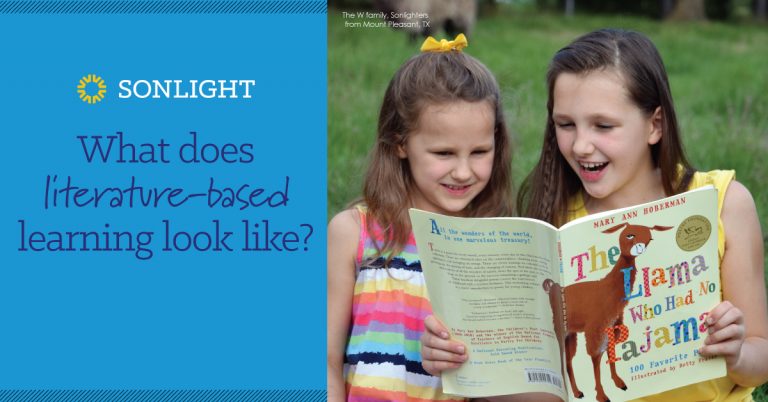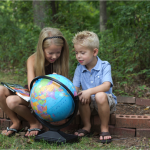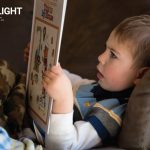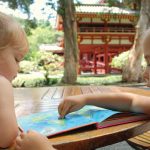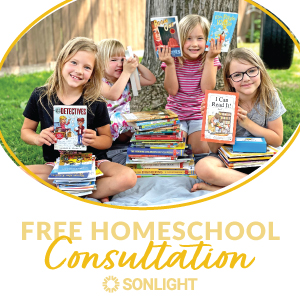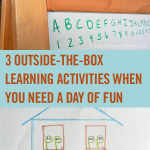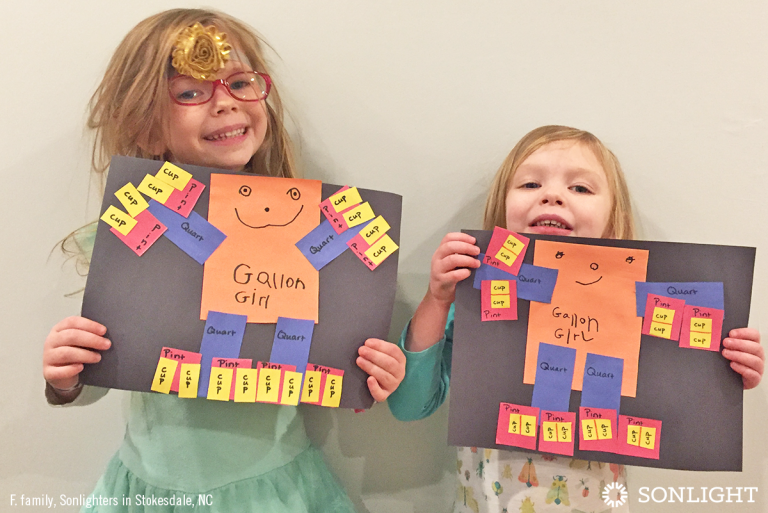
Although learning is fun and Sonlight is a wonderfully delightful way to homeschool, there are times when you or your kids get in a rut. On those days when motivation is waning or bad attitudes are cropping up, a small change of pace can make a huge positive impact. Here are three outside-the-box learning activities our family has used over the years to spice up our homeschool day with a bit of fun. Surprise your kids with one of these activities this week!
Dollar Words
For Spelling, Vocabulary, and Math
Virtually No Prep
The rule for creating dollar words is that each letter in the alphabet is assigned an increasing monetary value, with the letter A worth $.01 and Z worth $.26.
The goal is to come up with as many words as you can that are worth exactly $1.00. I write all the letters and their corresponding values at the top of a whiteboard, and then we all write dollar words in the space below.
If your family likes a healthy dose of competition, have a contest to see who can come up with the most dollar words in a certain amount of time. Or just leave things low-key with nothing but curiosity satisfied as you see how many dollar words your kids can think of.
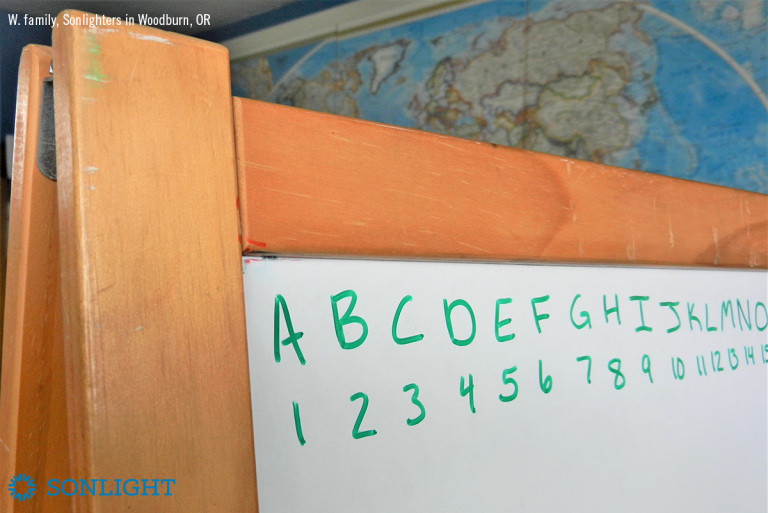
Gallon House
For Math and Life Skills
Virtually No Prep
If someone is struggling to keep liquid measurements straight, drawing a gallon house can be really helpful. The house itself is shaped like a G for gallon, with a roof added to the top. The four windows, each in the shape of a Q, symbolize quarts. The quart windows have two people in them, each one a P that represents pints. Each pint person has two eyes shaped like a C for cups. Now you have a visual representation of liquid measurements!
- 4 quarts in a gallon
- 2 pints in a quart
- 2 cups in a pint
You may want to hang your gallon house on the wall as a reference or tape it inside the cover of a math book for easy access. If your kids enjoy drawing, let them embellish their gallon houses by adding landscaping and other scenery.
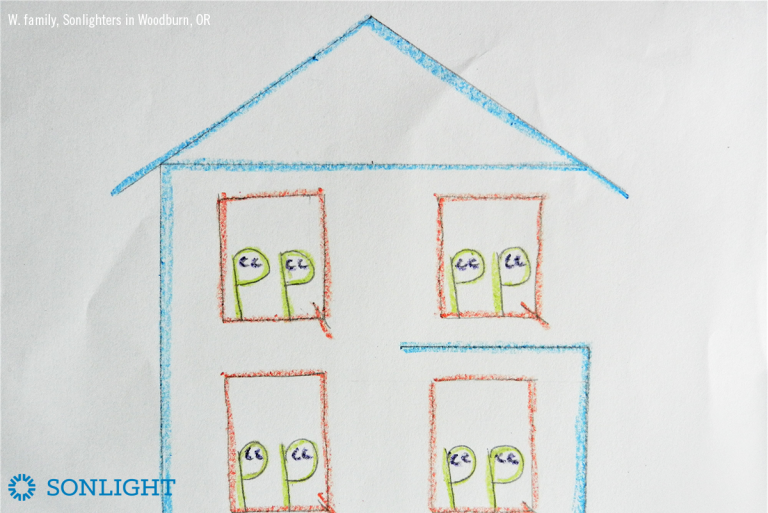
Lava Suckers
For Science
Moderate Prep
Most young kids are intrigued by volcanoes and have a sweet tooth; lava suckers are a fun way to combine both. Kids grasp the concept of liquid and solid forms of lava when they make hard candy.
- molten rock is represented by the hot lollipop mixture on the stove
- igneous rock is represented by the hardened lollipops cooling on the counter
Homemade lollipops have just a few basic ingredients and are simple to make. Do an online search for a recipe, buy some lollipop sticks at your local department store or online, and grab whatever flavoring sounds good to you. If you want to kick things up a notch, you can use candy molds, but placing the sticks on waxed paper and pouring the candy mixture directly on them in little rounds works just fine.
Making Phonics Fun
How about making an alphabet book? Cut out pictures that begin with the letter you are working on and paste them on a sheet in a folder.
Roll letters out of playdough.
Fill a dish soap container with water and squirt letters on the driveway or sidewalk. In the winter I filled the container with colored water and had the kids write in the snow. My yard looked like one huge snow cone.
Write letters on your child's back and have her guess which one.
Have her try to form a letter using her body. This one was a real hit with my daughter. It was funny to see her on the floor with arms and legs sticking out everywhere.
Vocabulary Building Games
We tend not to worry too much about vocab building exercises. What works the best for us are some games that our family plays naturally.
One of them is the synonym game. My husband and I spent much of our dating life trying to top one another with better words for any expression. When we were standing in the sweltering heat I said to him that I was extremely hot. He countered with, "Well, I am broiling." Then I replied, "I am roasting." Thirty minutes later we were still going. This became a ritual with us.
As the kids have come along, we have enjoyed watching them join in spontaneously. They are looking for ways to participate in something that is so obviously fun for us.
We also do the same with puns — Let's say someone starts to mention something related to fishing (like fishing for a compliment). Then one of us might add, "I'm not hooked on compliments." The other might continue, "Well, I'll bait you until you are." Then a reply might follow, "I won't be reeled in that easily." You get the idea.
The kids scream with laughter at these. And my older two (5th and 7th) play along pretty easily. My 7-year-old boy joined in the other day and we were floored. So fun to see them catch the power of language.
I also recommend Scattergories Jr. for vocabulary building and lots of reading and commenting on words as you read. Take one out that is new, and have everyone try to use it in the correct context. This is better than most of the workbooks for sure.
Drawing Party
My 10-year-old son wanted a drawing party, so I got sidewalk chalk and clean pavement, a long piece of butcher paper tacked to one wall for a mural, and had everyone bring a T-shirt, and I provided the fabric markers. I had plenty of paper, markers, colored pencils, and drawing books scattered around the patio, kitchen, and living room.
Making a Salt Relief Map
On an unbendable piece of cardboard (about 15x15 inches) draw the outline. Use pencil.
Make salt/flour dough:
1 part salt
2 parts flour
Enough water to make a slightly sticky, but manageable dough.
(1 cup salt, 2 cups flour will make enough dough for two good sized maps.)
If you would like to color the dough to show differences in elevation or vegetation, add a little food coloring or tempera paint to the dough when you add the water.
Take the salt dough and press it into the outline you have drawn on the cardboard. Build up ridges for mountains, make depressions in the dough to show rivers, lakes, or other low spots. You might want to use tempera paint to paint bordering oceans, nations, etc.
Lay the map flat and let it dry overnight.
Activities for American History
You could have your kids do some leather crafts while listening, make paper teepees with decorations, make a Native American vest with decoration, and do some beading while studying Native Americans. Have them make a paper doll with colonial clothing, build Lincoln Log cabins, create villages with toys, make a Jacob's ladder, play marbles, and so on for colonial period, you could have them put all their possessions (or a lot anyway) into a pillowcase or small trunk and masking tape an area on the floor that relates to how much space they may have had when traveling by boat to America and make them stay there for a while, and so on. There are lots of ways to make it fun and relevant for a younger child. They'll get to it again later on where they'll remember more facts than you thought. Your library should have Brown Paper School books and other books that have ideas for "playing history."
George Washington's BreaKF1st
An example from what we're reading this year for History, "George Washington's BreaKF1st." My son researched and figured out exactly what G.W. loved to eat for breaKF1st. So we made them for him as a reward for his efforts to figure it out. My family also followed suit and made hoe-cakes in the middle of the afternoon to snack on the day we read the book. So you cover life-skills training by letting the kids read a recipe for corn griddle cakes and making it. This also covers measurements for Math. You could also let your kids dress in "costume" and act out some of the stories from George Washington's life. You could bring in Science by figuring out what things were going on in the field at the time George Washington lived (Benjamin Franklin and his inventions!) So you are also using your time-line. And then let's not forget map skills: where all these things took place-Geography! What was happening in the art world at that time? Music?
Egypt Party
We had an Egypt party yesterday. It was a blast! Here's what we did:
1.Archeological dig (My 10-year-old daughter wrote on a clay pot, I broke it and she and some friends put it out in the yard for the smaller kids to dig up. The kids then cleaned it off and pieced it together to figure out the message.)
Sugar cube pyramids with brown sugar and glue.
Makeup for the girls.
Wigs for the girls (from Edupress).
King Tut mask (from Edupress).
I made coloring books for each of the kids that came and I put their name on the cover in hieroglyphics so they had to decode it to find which one was theirs (from the internet).
The kids loved it, the moms did too.
African Rain Sticks
We made African rain sticks and then looked Africa up on the globe & read from Stories from Africa! Take an empty wrapping paper tube & decorate. The book I have suggested "painting" with watered down glue & sticking on tissue paper squares. We just painted them with regular paint & let dry. Then you take toothpicks (8-16, I found 16 makes the best sound, I put them perpendicular to each other about 1/2-1 inch apart) & poke all the way through the tube (leave room on either end of the tube to hold it, the toothpicks stick out!). I had to use a knife to poke holes for the toothpicks. Then cover the one end (they suggested wax paper with rubber bands, I had tinfoil & twist-ties) & put 1 cup uncooked rice inside (with a funnel) before closing the second end. They sound great & my kids had so much fun with them! You could clip the toothpicks that are sticking out and glue in place.
Teaching Home Economy (Practical Life Skills)
Pick some bright cotton material, and go for lots of straight edges. The big mistake is making the first project too involved, too artistic. That leads to frustration for everyone.
My oldest son wanted to learn to sew last year (he was 10), so I taught him the basics of cutting straight, using the machine, pinning, that sort of thing. Nothing really technical. We looked at the underside and all the machinery — very interesting to a boy. I did not use a curriculum, just figured out what he wanted to know then thought of ways to show him those things.
After that, I required schoolwork to come first, then he could "play" on the sewing machine. He makes puppets, simple bags, bean bags, and pillows. The hardest project so far was a flannel night shirt.
Our next project is shorts. I teach him in small bursts, a little every 3-4 months, rather than all in one big swoop.
Family Trivia Game
Ask all the various members of the family to compile lists of questions for a trivia game. ("What was the name of Susie's imaginary friend?" "What did Joe give Mark for Christmas last year?" or whatever. By getting input from all of the family, hopefully you can collect questions from all facets of life. Then someone can put them together onto cards, and you can play a game.
Keep Learning Fun
The primary purpose of each of these activities is to inject fun into your day while reinforcing educational concepts, so be sure to talk with your kids about what they’re learning. If your kids seem extra curious, pull out a reference book for further study.
At the same time, remember that just because something is educational doesn’t mean it can’t simply be fun. Kids will learn something from all three of these activities even if you don’t spend a bunch of time talking about the concepts behind them. Sometimes the best way to learn something is to tone down the academic talk and ramp up the fun factor.


